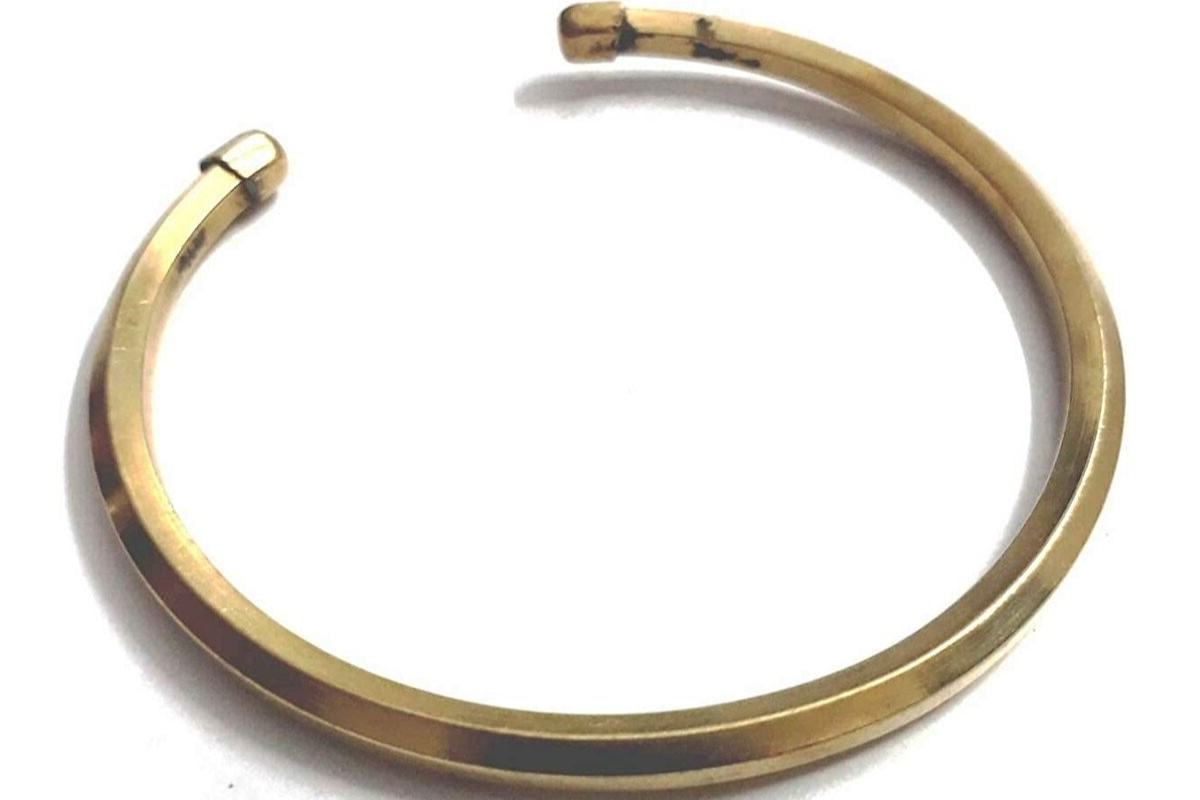
Ashtadhatu, an ancient alloy, holds a significant place in history and tradition. Composed of eight metals—gold, silver, copper, zinc, lead, tin, iron, and mercury—this unique blend has been used for centuries in crafting idols, jewelry, and artifacts. But why is Ashtadhatu so revered? Its durability, spiritual significance, and unique properties make it a fascinating subject. From ancient temples to modern homes, Ashtadhatu continues to captivate artisans and enthusiasts alike. Curious about the secrets behind this mystical alloy? Let's delve into 30 intriguing facts that will shed light on its history, composition, and uses. Prepare to be amazed by the wonders of Ashtadhatu!
Key Takeaways:
- Ashtadhatu, an ancient alloy of eight metals, holds cultural and religious significance in India. It's used to craft idols, jewelry, and artifacts, and remains relevant in modern times.
- The unique properties of Ashtadhatu, including durability, corrosion resistance, and aesthetic appeal, make it suitable for various uses, symbolizing unity and spirituality in Indian culture.
What is Ashtadhatu?
Ashtadhatu, an ancient alloy, holds significant cultural and religious importance in India. This alloy, composed of eight metals, is often used in crafting idols and artifacts. Let's dive into some fascinating facts about Ashtadhatu.
Composition of Ashtadhatu
Understanding the composition of Ashtadhatu is crucial to appreciating its unique properties and uses.
-
Ashtadhatu is a blend of eight metals. These metals typically include gold, silver, copper, zinc, lead, tin, iron, and mercury.
-
The exact composition can vary. Depending on the region and the specific use, the proportions of each metal might differ.
-
Gold and silver are often the primary metals. These two metals are usually present in higher quantities compared to the others.
-
Copper provides strength. Copper is added to enhance the durability and strength of the alloy.
-
Mercury adds fluidity. Mercury helps in the amalgamation process, making the alloy easier to mold.
Historical Significance
Ashtadhatu has a rich history, deeply intertwined with Indian culture and tradition.
-
Used since ancient times. The use of Ashtadhatu dates back to ancient India, particularly in religious and ceremonial contexts.
-
Mentioned in ancient texts. References to Ashtadhatu can be found in ancient scriptures and texts, highlighting its importance.
-
Associated with Hindu deities. Many idols of Hindu gods and goddesses are crafted from Ashtadhatu.
-
Symbol of prosperity. In many cultures, Ashtadhatu is considered a symbol of wealth and prosperity.
-
Used in rituals. The alloy is often used in various religious rituals and ceremonies.
Uses of Ashtadhatu
Ashtadhatu's unique properties make it suitable for a variety of uses, especially in religious and artistic contexts.
-
Idol making. One of the primary uses of Ashtadhatu is in crafting idols of deities.
-
Jewelry. Some traditional jewelry pieces are made from Ashtadhatu.
-
Artifacts. The alloy is used to create various artifacts and decorative items.
-
Temple bells. Many temple bells are made from Ashtadhatu due to its resonant properties.
-
Religious utensils. Utensils used in religious ceremonies are often crafted from this alloy.
Properties of Ashtadhatu
The unique combination of metals gives Ashtadhatu several distinctive properties.
-
Durability. Ashtadhatu is known for its strength and durability.
-
Corrosion resistance. The alloy is resistant to corrosion, making it suitable for long-lasting artifacts.
-
Malleability. It is highly malleable, allowing artisans to craft intricate designs.
-
Aesthetic appeal. The alloy has a distinct, appealing look, often with a golden or silvery sheen.
-
Acoustic properties. Ashtadhatu has excellent acoustic properties, making it ideal for musical instruments and bells.
Cultural Importance
Ashtadhatu holds a special place in Indian culture, symbolizing various aspects of life and spirituality.
-
Symbol of unity. The combination of eight metals symbolizes unity and harmony.
-
Spiritual significance. Many believe that Ashtadhatu idols possess spiritual energy.
-
Used in festivals. During festivals, Ashtadhatu items are often used for decoration and rituals.
-
Gift items. Ashtadhatu artifacts are popular as gifts, especially during religious occasions.
-
Preservation of tradition. The use of Ashtadhatu helps preserve traditional craftsmanship and techniques.
Modern Relevance
Despite its ancient origins, Ashtadhatu remains relevant in modern times.
-
Continued use in temples. Many new temples still use Ashtadhatu for idols and other items.
-
Artistic value. Modern artists and sculptors continue to use Ashtadhatu in their works.
-
Cultural heritage. Ashtadhatu items are considered valuable cultural heritage pieces.
-
Educational importance. Studying Ashtadhatu helps understand ancient metallurgical practices.
-
Economic value. Ashtadhatu artifacts can be quite valuable, both culturally and economically.
The Final Word on Ashtadhatu
Ashtadhatu, an ancient alloy, holds a special place in history and culture. Made from eight metals, it’s known for its durability and spiritual significance. Used in crafting statues, jewelry, and religious artifacts, this alloy combines gold, silver, copper, zinc, lead, tin, iron, and mercury. Each metal brings unique properties, making Ashtadhatu both strong and versatile.
Understanding its composition and uses helps appreciate its value. Whether you’re a history buff or just curious, knowing these facts enriches your knowledge. Ashtadhatu isn’t just a relic of the past; it’s a testament to ancient craftsmanship and cultural heritage. Next time you see an Ashtadhatu artifact, you’ll know the fascinating blend of metals and history behind it.
Frequently Asked Questions
Was this page helpful?
Our commitment to delivering trustworthy and engaging content is at the heart of what we do. Each fact on our site is contributed by real users like you, bringing a wealth of diverse insights and information. To ensure the highest standards of accuracy and reliability, our dedicated editors meticulously review each submission. This process guarantees that the facts we share are not only fascinating but also credible. Trust in our commitment to quality and authenticity as you explore and learn with us.
